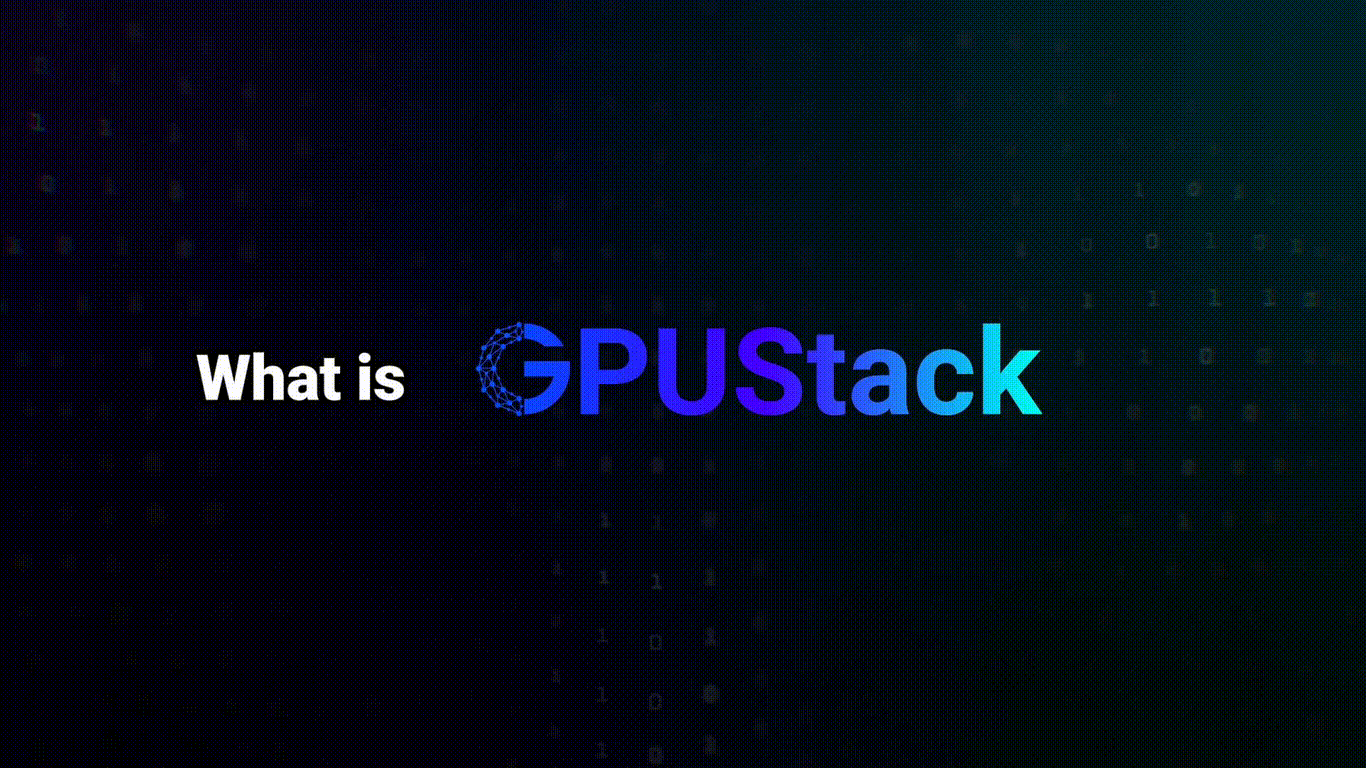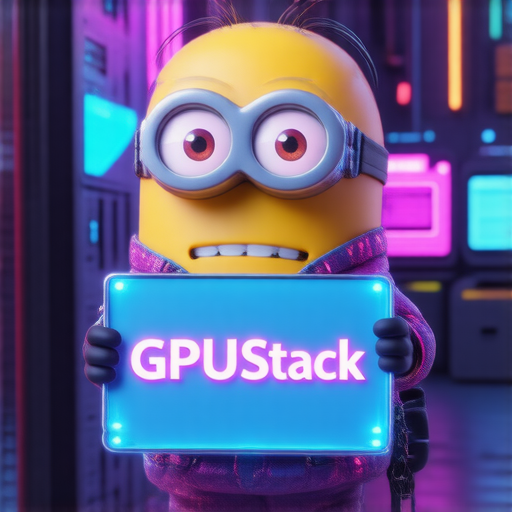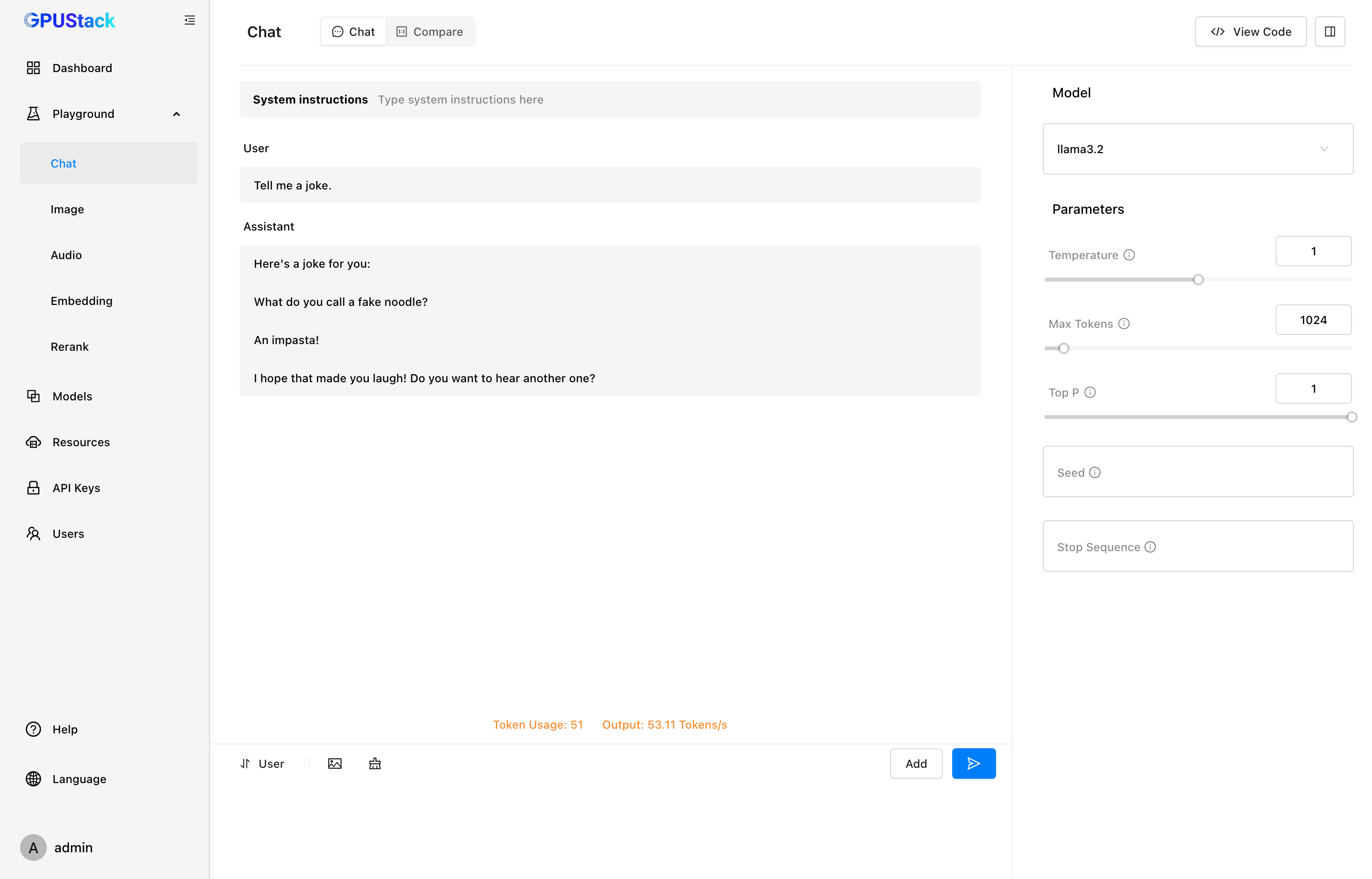GPUStack is an open-source GPU cluster manager for running AI models.
- Broad Hardware Compatibility: Run with different brands of GPUs in Apple MacBooks, Windows PCs, and Linux servers.
- Broad Model Support: From LLMs and diffusion models to audio, embedding, and reranker models.
- Scales with Your GPU Inventory: Easily add more GPUs or nodes to scale up your operations.
- Distributed Inference: Supports both single-node multi-GPU and multi-node inference and serving.
- Multiple Inference Backends: Supports llama-box (llama.cpp) and vLLM as the inference backends.
- Lightweight Python Package: Minimal dependencies and operational overhead.
- OpenAI-compatible APIs: Serve APIs that are compatible with OpenAI standards.
- User and API key management: Simplified management of users and API keys.
- GPU metrics monitoring: Monitor GPU performance and utilization in real-time.
- Token usage and rate metrics: Track token usage and manage rate limits effectively.
GPUStack provides a script to install it as a service on systemd or launchd based systems. To install GPUStack using this method, just run:
curl -sfL https://get.gpustack.ai | sh -s -Run PowerShell as administrator (avoid using PowerShell ISE), then run the following command to install GPUStack:
Invoke-Expression (Invoke-WebRequest -Uri "https://get.gpustack.ai" -UseBasicParsing).ContentFor manual installation, docker installation or detailed configuration options, please refer to the Installation Documentation.
- Run and chat with the llama3.2 model:
gpustack chat llama3.2 "tell me a joke."- Run and generate an image with the stable-diffusion-v3-5-large-turbo model:
This command downloads the model (~12GB) from Hugging Face. The download time depends on your network speed. Ensure you have enough disk space and VRAM (12GB) to run the model. If you encounter issues, you can skip this step and move to the next one.
gpustack draw hf.co/gpustack/stable-diffusion-v3-5-large-turbo-GGUF:stable-diffusion-v3-5-large-turbo-Q4_0.gguf \
"A minion holding a sign that says 'GPUStack'. The background is filled with futuristic elements like neon lights, circuit boards, and holographic displays. The minion is wearing a tech-themed outfit, possibly with LED lights or digital patterns. The sign itself has a sleek, modern design with glowing edges. The overall atmosphere is high-tech and vibrant, with a mix of dark and neon colors." \
--sample-steps 5 --showOnce the command completes, the generated image will appear in the default viewer. You can experiment with the prompt and CLI options to customize the output.
- Open
http://myserverin the browser to access the GPUStack UI. Log in to GPUStack with usernameadminand the default password. You can run the following command to get the password for the default setup:
Linux or macOS
cat /var/lib/gpustack/initial_admin_passwordWindows
Get-Content -Path "$env:APPDATA\gpustack\initial_admin_password" -Raw- Click
Playgroundin the navigation menu. Now you can chat with the LLM in the UI playground.
-
Click
API Keysin the navigation menu, then click theNew API Keybutton. -
Fill in the
Nameand click theSavebutton. -
Copy the generated API key and save it somewhere safe. Please note that you can only see it once on creation.
-
Now you can use the API key to access the OpenAI-compatible API. For example, use curl as the following:
export GPUSTACK_API_KEY=myapikey
curl http://myserver/v1-openai/chat/completions \
-H "Content-Type: application/json" \
-H "Authorization: Bearer $GPUSTACK_API_KEY" \
-d '{
"model": "llama3.2",
"messages": [
{
"role": "system",
"content": "You are a helpful assistant."
},
{
"role": "user",
"content": "Hello!"
}
],
"stream": true
}'- macOS
- Linux
- Windows
- Apple Metal (M-series chips)
- NVIDIA CUDA (Compute Capability 6.0 and above)
- Ascend CANN
- Moore Threads MUSA
We plan to support the following accelerators in future releases.
- AMD ROCm
- Intel oneAPI
- Qualcomm AI Engine
GPUStack uses llama-box (bundled llama.cpp and stable-diffusion.cpp server), vLLM and vox-box as the backends and supports a wide range of models. Models from the following sources are supported:
-
Local File Path
| Category | Models |
|---|---|
| Large Language Models(LLMs) | Qwen, LLaMA, Mistral, Deepseek, Phi, Yi |
| Vision Language Models(VLMs) | Llama3.2-Vision, Pixtral , Qwen2-VL, LLaVA, InternVL2 |
| Diffusion Models | Stable Diffusion, FLUX |
| Rerankers | GTE, BCE, BGE, Jina |
| Audio Models | Whisper (speech-to-text), CosyVoice (text-to-speech) |
For full list of supported models, please refer to the supported models section in the inference backends documentation.
GPUStack serves the following OpenAI compatible APIs under the /v1-openai path:
- List Models
- Create Completion
- Create Chat Completion
- Create Embeddings
- Create Image
- Create Image Edit
- Create Speech
- Create Transcription
For example, you can use the official OpenAI Python API library to consume the APIs:
from openai import OpenAI
client = OpenAI(base_url="http://myserver/v1-openai", api_key="myapikey")
completion = client.chat.completions.create(
model="llama3.2",
messages=[
{"role": "system", "content": "You are a helpful assistant."},
{"role": "user", "content": "Hello!"}
]
)
print(completion.choices[0].message)GPUStack users can generate their own API keys in the UI.
Please see the official docs site for complete documentation.
-
Install Python (version 3.10 to 3.12).
-
Run
make build.
You can find the built wheel package in dist directory.
Please read the Contributing Guide if you're interested in contributing to GPUStack.
Copyright (c) 2024 The GPUStack authors
Licensed under the Apache License, Version 2.0 (the "License"); you may not use this file except in compliance with the License. You may obtain a copy of the License at LICENSE file for details.
Unless required by applicable law or agreed to in writing, software distributed under the License is distributed on an "AS IS" BASIS, WITHOUT WARRANTIES OR CONDITIONS OF ANY KIND, either express or implied. See the License for the specific language governing permissions and limitations under the License.








